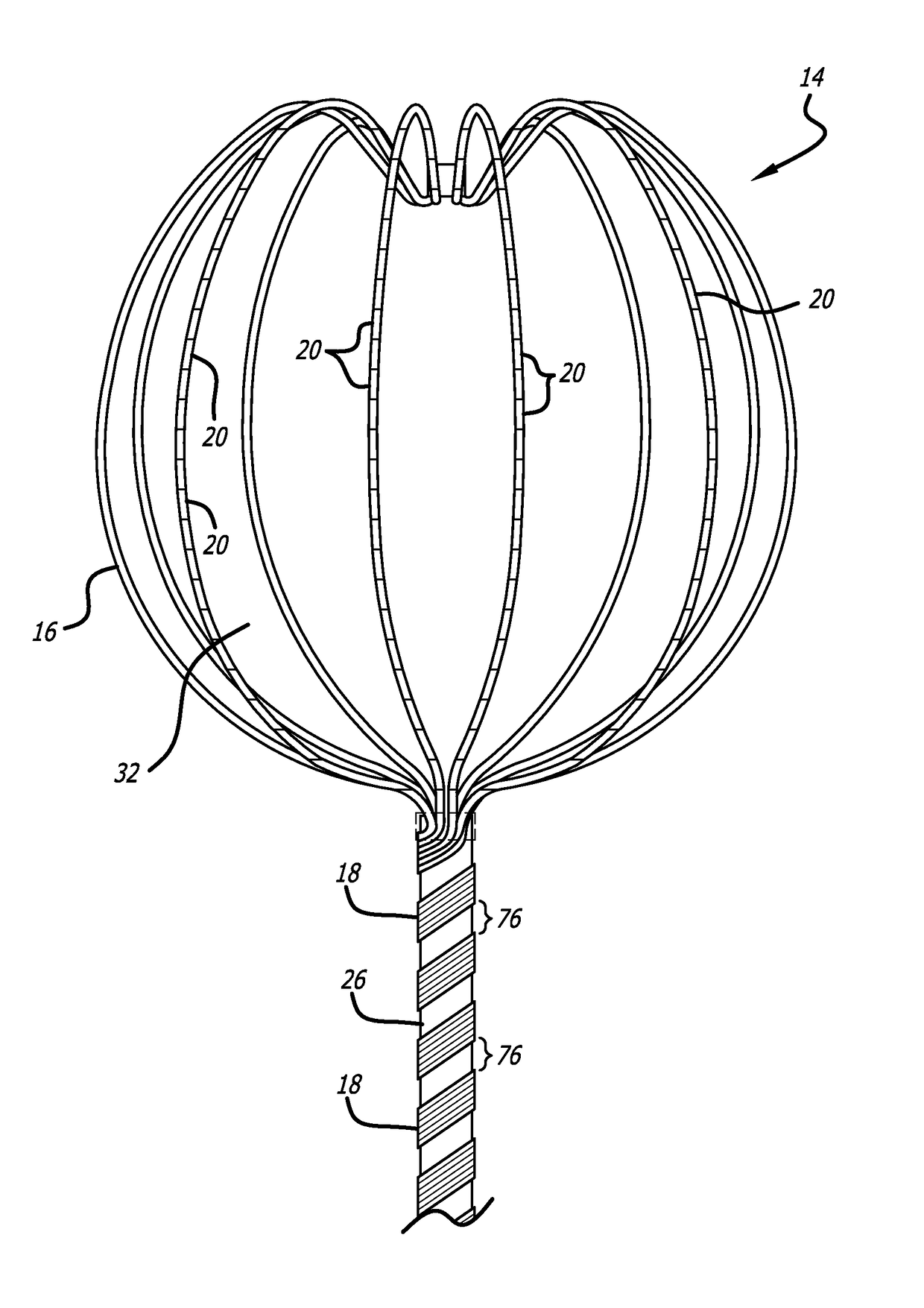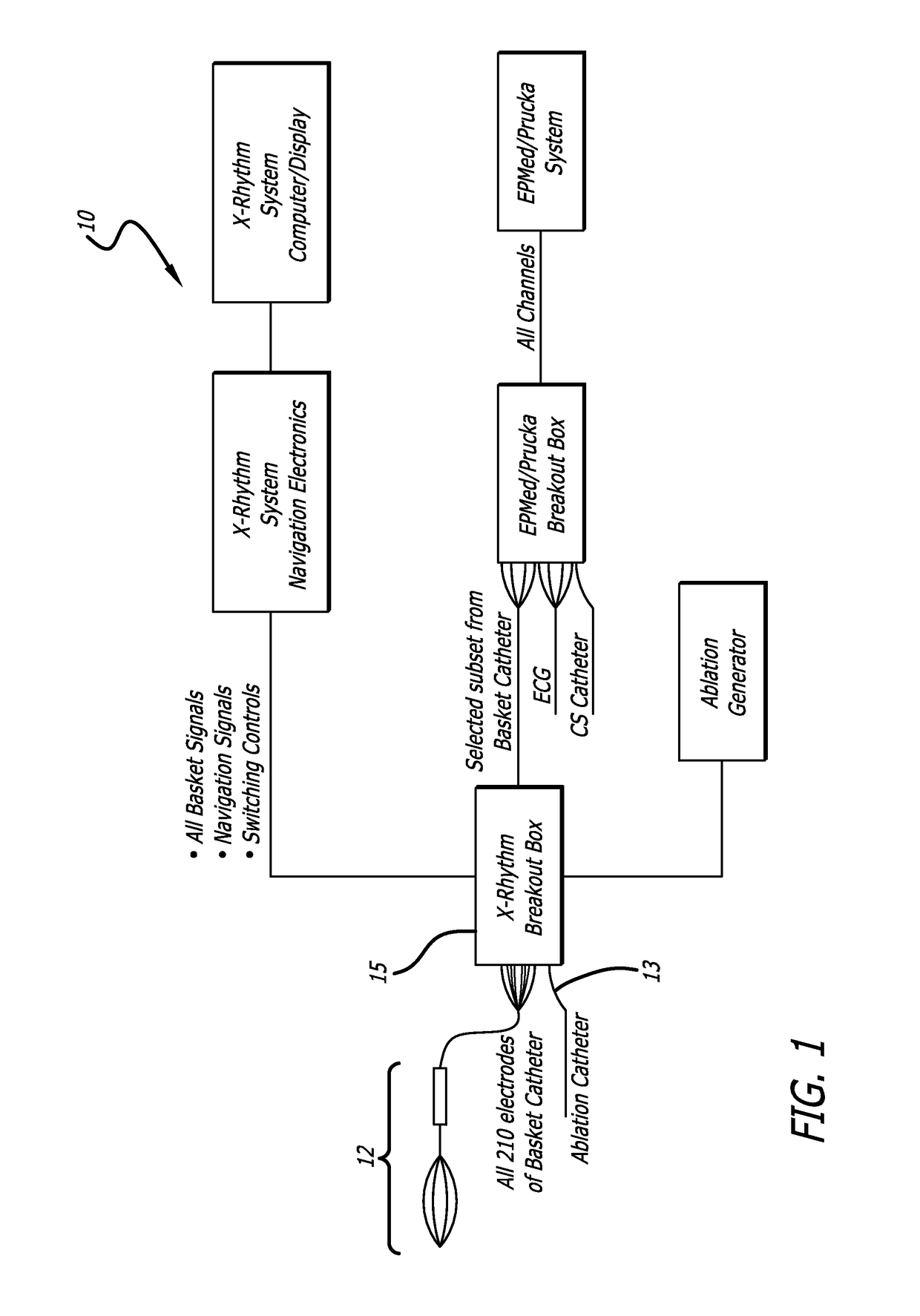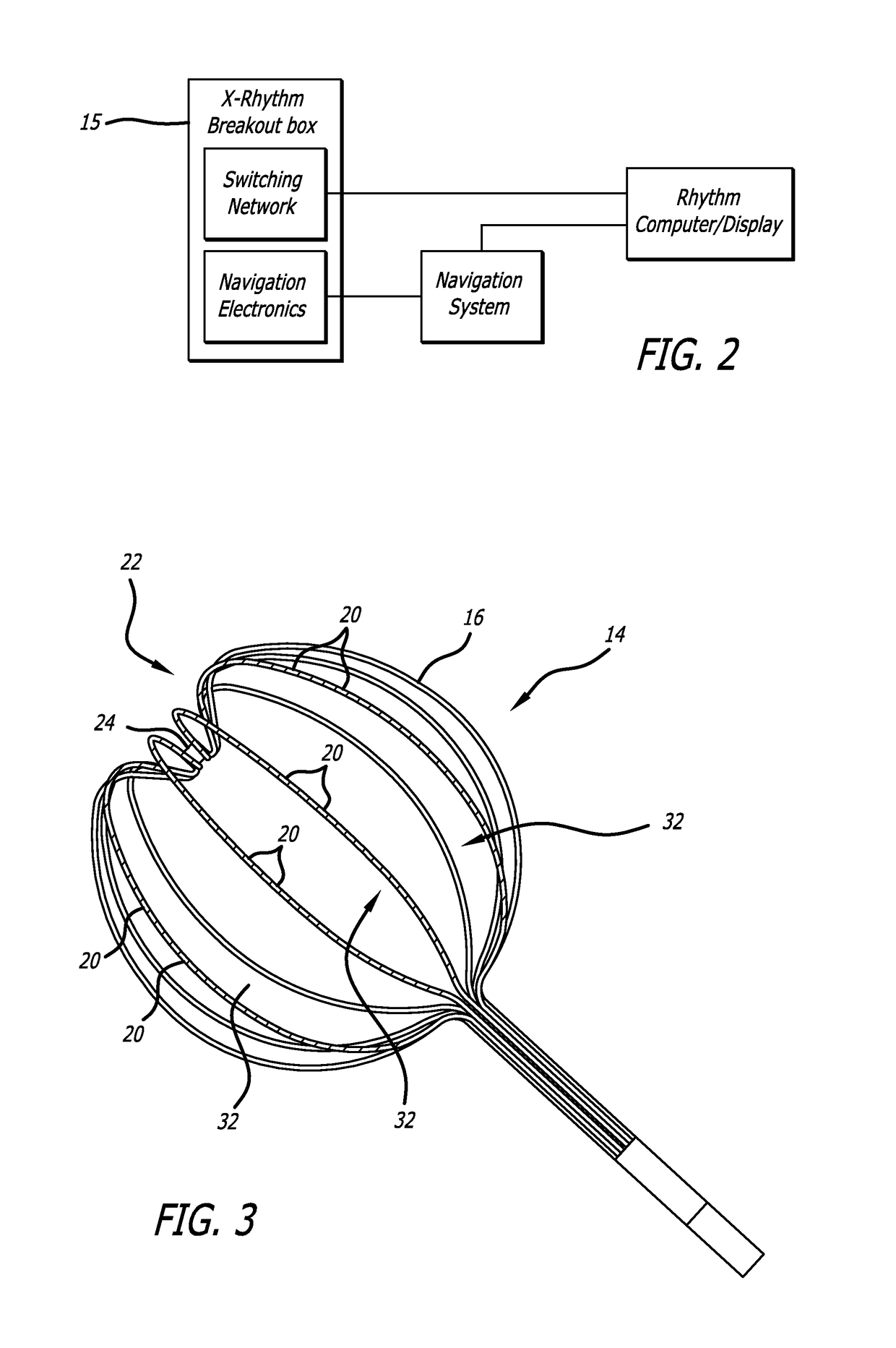Multi-electrode mapping catheter
a multi-electrode, catheter technology, applied in the field of cardiac mapping, can solve the problems of limited capability of endocardial mapping catheters, difficult to accurately map the heart, stroke, etc., and achieve the effect of reducing the rigidity of the catheter shaft, reducing manufacturing costs, and inherent resilience to expansion
- Summary
- Abstract
- Description
- Claims
- Application Information
AI Technical Summary
Benefits of technology
Problems solved by technology
Method used
Image
Examples
Embodiment Construction
[0061]Turning now in more detail to the drawings in which like reference numerals indicate like or similar elements across the several views, FIGS. 1 and 2 schematically depict a endocardial mapping and ablation system 10 which incorporates a multi-electrode mapping catheter 12 which embodies features of the present invention. The mapping catheter 12 (described in greater detail below) and an ablation catheter 13 are connected to the system through a breakout box 15 (similar to the CIM or catheter input module of the Carto® system or the Nay modules of the NavX™ system). The breakout box serves to route all signals to the main system, as needed, while allowing user selected signals to be forwarded to the EP system, as well as connecting the ablation generator to the ablation catheter 13. The system's mapping function uses the cardiac signals detected from the heart surface via electrodes located on the mapping catheter 12 to create a real time, three dimensional (3D) activation map ...
PUM
 Login to View More
Login to View More Abstract
Description
Claims
Application Information
 Login to View More
Login to View More - R&D
- Intellectual Property
- Life Sciences
- Materials
- Tech Scout
- Unparalleled Data Quality
- Higher Quality Content
- 60% Fewer Hallucinations
Browse by: Latest US Patents, China's latest patents, Technical Efficacy Thesaurus, Application Domain, Technology Topic, Popular Technical Reports.
© 2025 PatSnap. All rights reserved.Legal|Privacy policy|Modern Slavery Act Transparency Statement|Sitemap|About US| Contact US: help@patsnap.com



